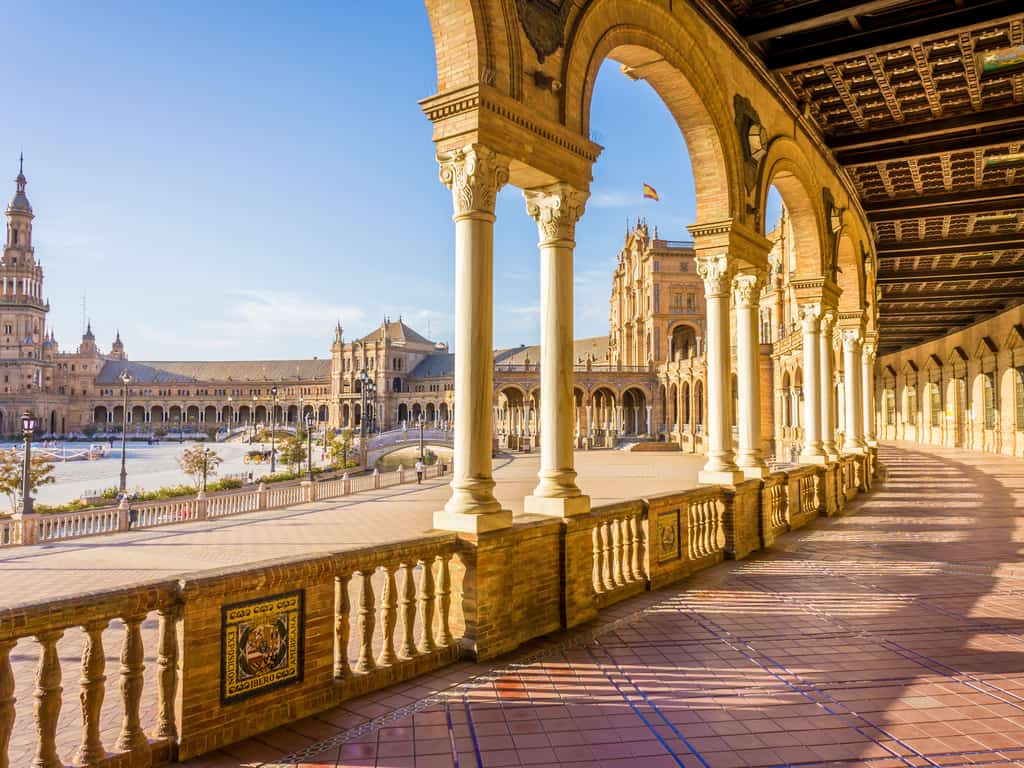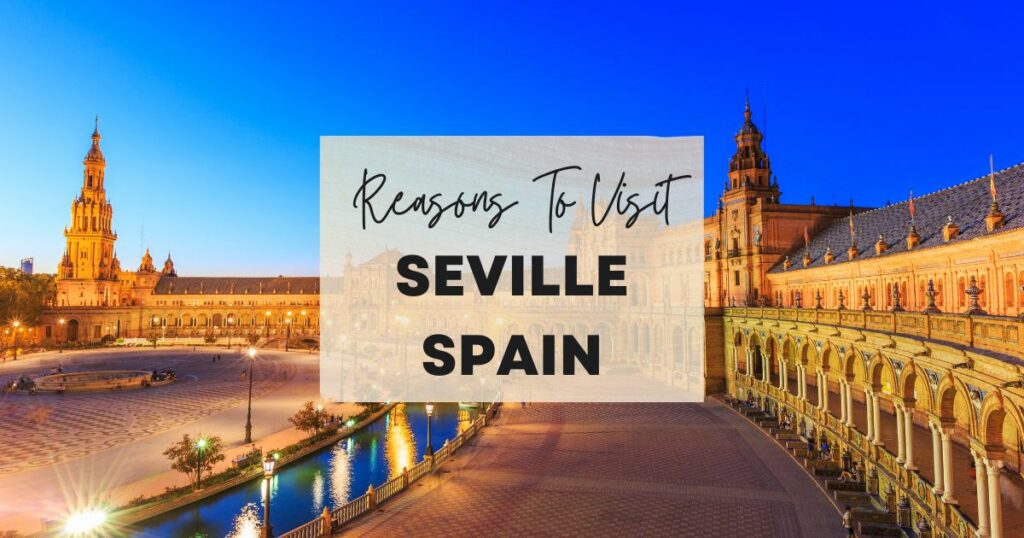You won’t believe what Seville has to offer. Get the most out of your vacation by exploring the best things to do in Seville and the best places to visit in Seville below. Wondrous Drifter is a Web 3 travel company that aspires to disrupt the travel industry.
Table Of Content
- Archaeological Museum of Seville
- Barrio Santa Cruz
- Basílica de la Macarena
- Feria de Abril
- Guadalquivir River Cruise
- Iglesia Colegial del Salvador
- Italica
- La Giralda
- Maria Luisa Park
- Metropol Parasol
- Museum of Arts and Traditions
- Museum of Fine Arts
- Plaza de España
- Plaza de Toros de la Real Maestranza
- Ramón Sánchez-Pizjuán Stadium
- Real Alcázar
- Semana Santa
- Seville Cathedral
- Tablaos and Flamenco Shows
- Triana
Archaeological Museum of Seville
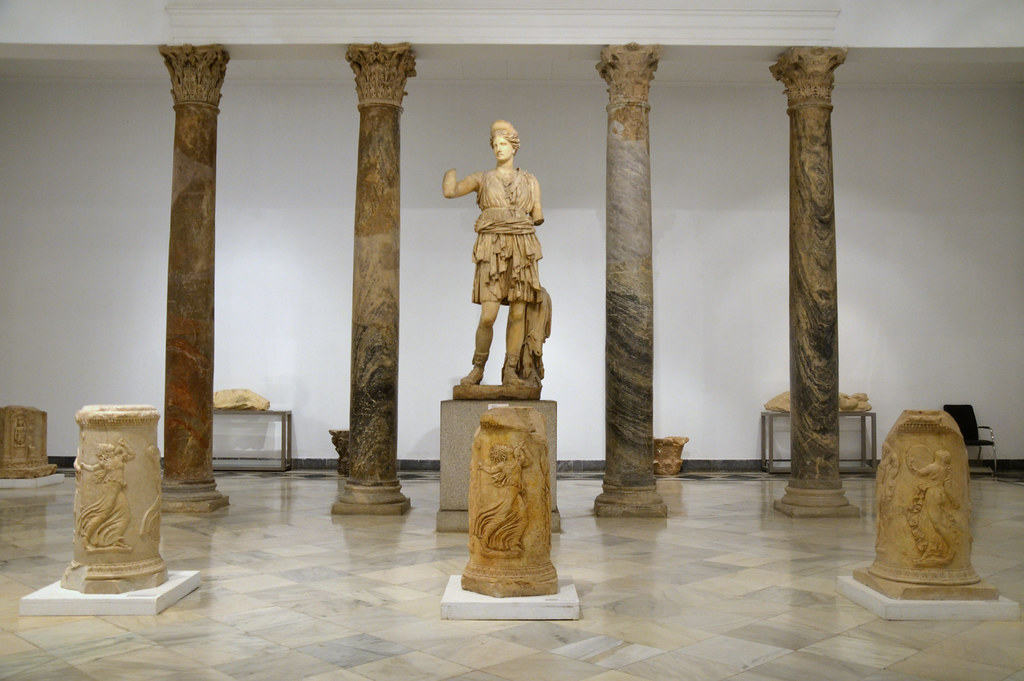
You will find a lot of treasures, and you won’t regret it!
The beginnings of Seville’s Archaeological Museum date back to the late nineteenth century, primarily from the Roman city of Italica, when a public collection of artifacts was assembled.
A variety of artifacts from prehistoric to medieval times, as well as the end of the modern era, are on display to the public at the Museum of Prehistoric and Roman Art, which is based primarily in Italica.
Items from the Phoenician and Tartessian cultures, dating back to the Late Bronze Age, are among the museum’s most significant holdings.
A significant number of statues from the reign of Adriano can be found in the collection.
The most significant objects from the Seville Province’s archaeological sites were assembled for the Ibero-American Exposition in this exhibit.
A gold trove of 21 pieces of jewelry was installed in 2012, following a long period of duplicates on exhibit.
You won’t want to miss out on the hidden treasures in this museum!
Address: Pl. América, s/n, 41013 Sevilla, Spain
Barrio Santa Cruz
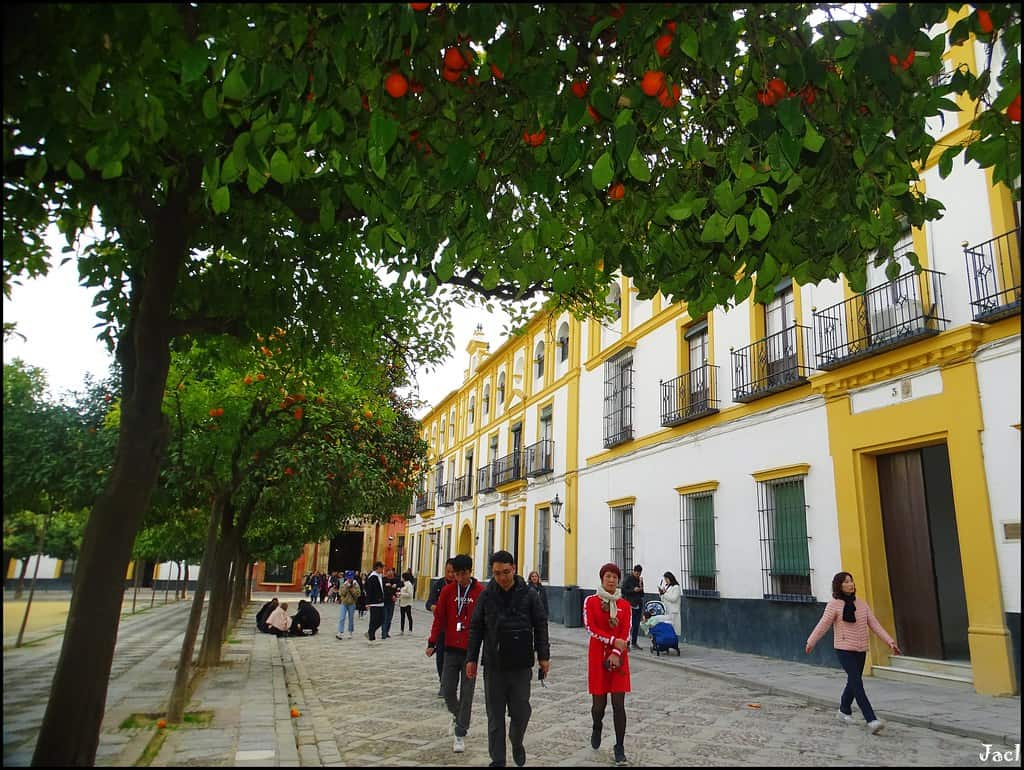
Getting lost in a historic neighborhood’s winding streets and narrow alleyways is a thrilling experience for the curious traveler.
There are few European districts more beautiful than Barrio Santa Cruz’s 15th-century heritage and a plethora of lovely restaurants, as well as the orange-tree-covered squares that welcome walkers around every corner.
Seville’s former Jewish district, the Barrio de Santa Cruz, is located here. In this historic district, you’ll find the Cathedral’s Giralda Tower and the Alcazar Palace.
Touristy restaurants and beautiful squares are scattered throughout the neighborhood, a tangle of narrow streets and alleyways.
The modern-day heart of Seville’s tourism industry can be found in this neighborhood and the old town, characterized by its numerous brightly colored residences.
Before the Spanish Inquisition in the late 15th century, when Jews were exiled from Spain, Barrio Santa Cruz was the city’s Jewish district.
Traces of the quarter’s former residents can still be found on Calle Judera, a street named after the Jewish quarter, in the neighborhood’s heart.
Several of the neighborhood’s churches were synagogues when they were first built.
For a peaceful respite from the city, head to Santa Cruz’s eastern border, where the Jardines de Murillo open space awaits.
Address: Santa Cruz, Seville
Basílica de la Macarena
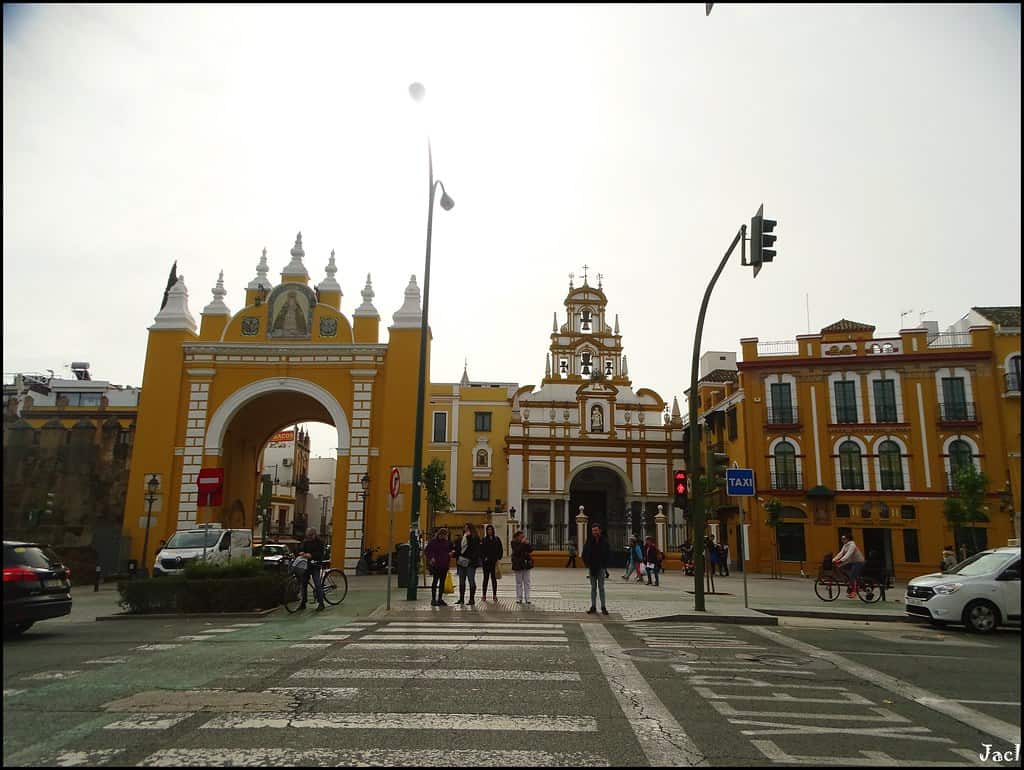
Check out this bright-colored church that will give color to your day!
Seville’s working-class quarter, dubbed “Macarena,” surrounds the basilica, making it a favorite destination for residents. The Arco de la Macarena is located next to the basilica.
In the 12th century, the Almohad dynasty used this arch as the city gate leading to the Royal Palace of Seville. It is now a fragment of the castle wall.
The Macarena neighborhood is one of Seville’s most authentic, despite its distance from the city’s main tourist attractions.
The gold and white cathedral may appear a little outside, but its exquisite interiors are worth a closer look.
The ceiling and walls are covered in frescoes, with gold accents throughout to add a glimmering quality.
Recently, some people have stated that they prefer this basilica to the enormous cathedral.
People love the church’s bright golden altar, which houses a famous statue of the Virgin of Hope, or La Macarena, a weeping Mary who is a prominent part of Semana Santa celebrations in the area.
The Macarena neighborhood’s Catholic temple is a sight for anyone who enters.
Address: Pl. de la Esperanza Macarena, 1, 41002 Sevilla, Spain
Feria de Abril
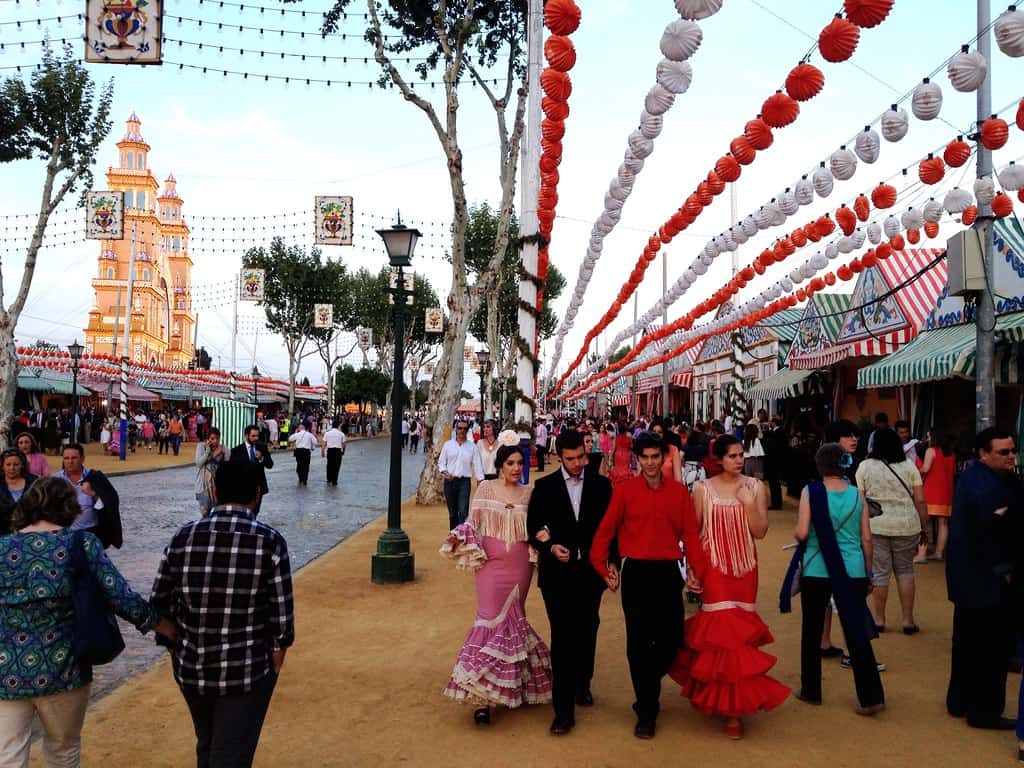
The world’s most vibrant party invites you to participate!
“Feria de Abril” is the city’s most popular event, a microcosm of Sevilla in which the uniqueness and seduction of its people are on display in all their glory.
Every spring, Seville’s Feria de Abril kicks off with an event known as “alumbrao,” which occurs when all of the fairground’s lights go on.
While you’re in the stands, don’t miss out on the customary “Pescado Frito,” or fried fish.
The fair finishes with a spectacular firework show over the Guadalquivir River, capping off a week of nonstop festivities.
All of the streets in the fair are named after historical bullfighters, and lanterns light the booths to create an ephemeral village.
In honor of Seville’s most famous landmark, a colorful facade is created at the entrance every year.
Sevillans often congregate in front of the facade, which is illuminated by hundreds of lights and serves as a focal point for the city.
You’ll be greeted with a kaleidoscope of color and excitement at this event!
Guadalquivir River Cruise
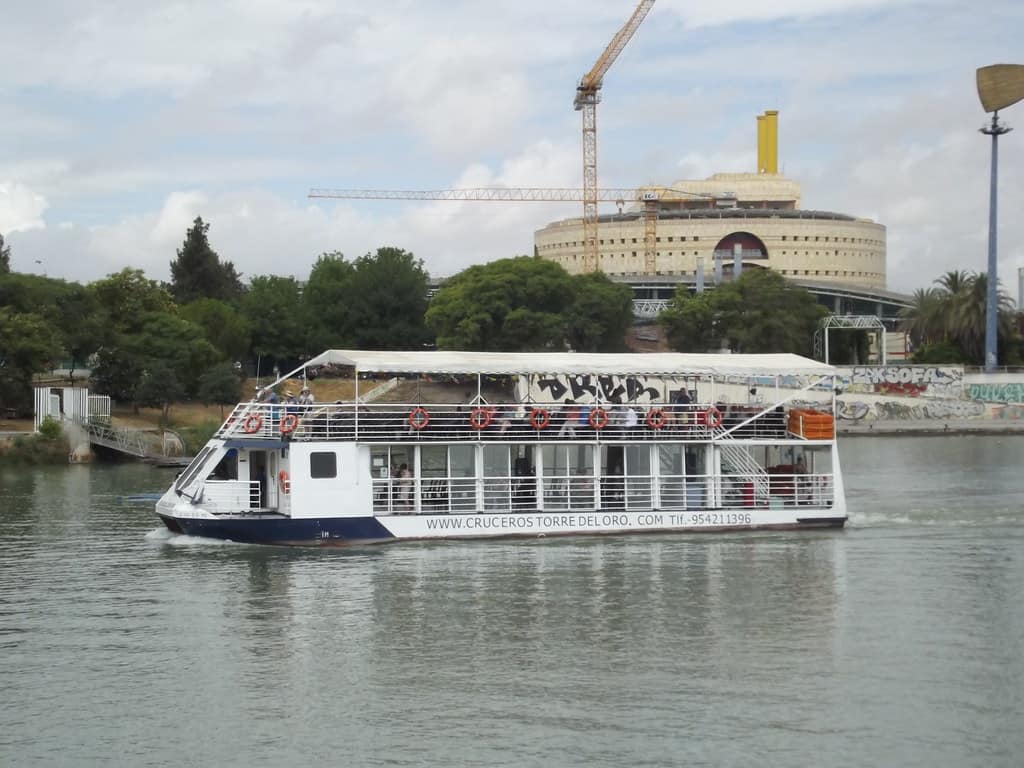
Learn about the history that drifts through this city.
Seville’s fame is partly due to its rich history, intertwined with the enormous river flowing through the city’s center.
The city is known as where the world’s heartbeat is. Seville’s river, the Guadalquivir, is Spain’s sole navigable river.
This river has been pivotal in many of the city’s most significant events.
Its waterways have been a stage for centuries for defenses, battles, and conquests. In contrast, its coasts have been a source of exploration and adventure.
Did you know that the first-ever round-the-world voyage began in Seville? After setting sail from Sanlucar de Barrameda, Ferdinand Magellan proceeded to round the globe in 1519.
It is possible to observe the armillary sphere that marks the zeroth mile of the journey while passing the San Telmo bridge.
For more than two centuries in the 16th century, Seville’s river served as the primary marine conduit for Atlantic trade.
When it comes to culture, business, and urban development in the city, it is distinctive because of its extensive maritime activities.
Relaxing river cruises are a great opportunity to learn new things. Try this one on your visit!
Iglesia Colegial del Salvador
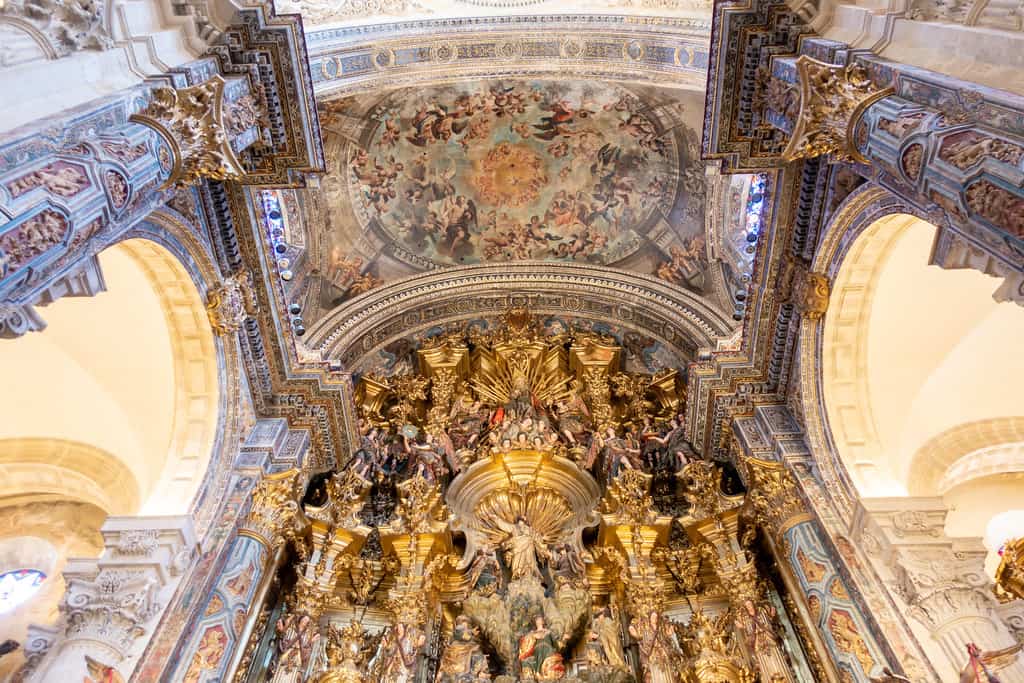
Find out how a mosque was converted into a church!
The Roman Catholic Church is easily visible from Plaza del Salvador. It is located a little more than a quarter-mile from the city’s heart.
Iglesia Colegial del Salvador is the city’s second-biggest church after the Cathedral of Seville.
The Patio de Abluciones, which dates back to the 9th century, and the base of the tower, which Leonardo de Figueroa built at the end of the 17th century, have been preserved.
Cayetano de Acosta painted both the main altarpiece from 1770 to1779 and the gigantic altarpiece on the holy chapel’s altar of the Transfiguration, both of which can be found inside the temple and are considered monumental and typical masterpieces of Sevillian baroque.
The church, which was once a mosque, was reconstructed in the 15th century and retained parts of its Moorish architecture, including domes and arches, in its design.
Its complex stained-glass windows and vibrant hues let in as much natural light as possible.
After exploring the church, you can enjoy a drink or tapas in one of the many bars in the charming Salvador square.
Address: Pl. del Salvador, 3, 41004 Sevilla, Spain
Italica
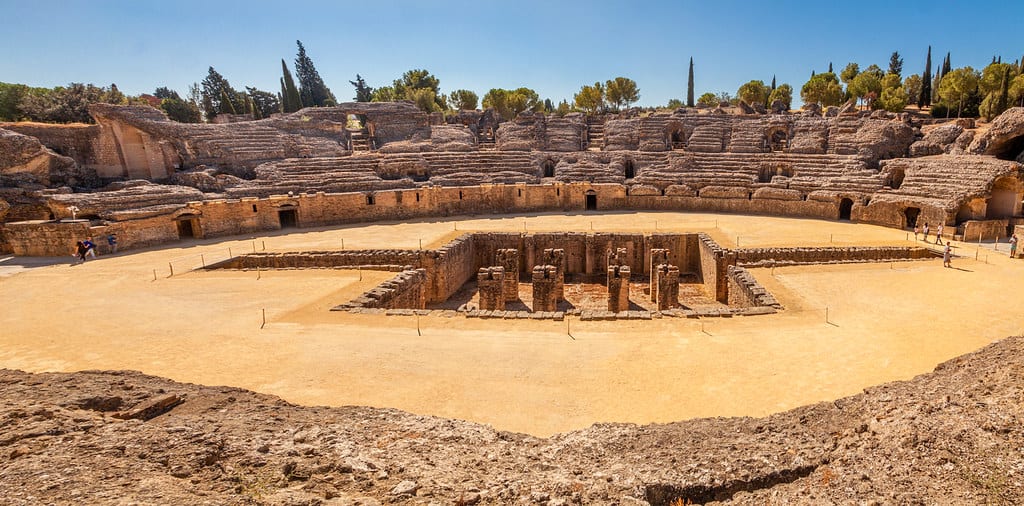
Visit the birthplace of the Roman Emperors!
The amphitheater at Italica, which is part of a huge archaeological site, is the site’s most notable feature.
In its heyday, this was able to accommodate 25,000 spectators. You can explore tunnels beneath the terraced seating to get a look at the subterranean construction located in the center of the arena.
On what are thought to have been the sites of the old city are the structures of houses and temples, some of which still have their whole mosaic floors intact.
Because of the region’s prominence as a source of grain and olive oil, some local families who owned private farms were extremely prosperous due to their sales to Rome.
You cannot leave Itálica without witnessing Neptune’s Mosaic, the Birds’ Mosaic, or the Planetary’s mosaic.
It represents the seven planetary deities, corresponding to the seven days of the week used in Roman times.
There are a lot of things you should not miss, so make sure to visit!
La Giralda
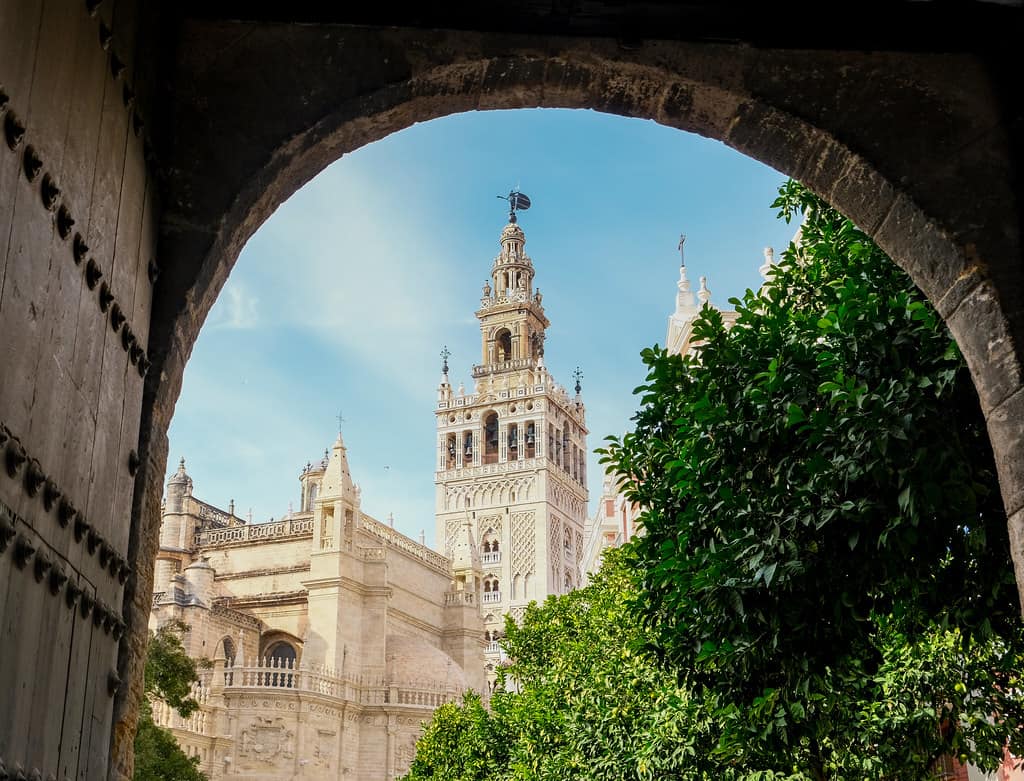
The Giralda, the bell tower immediately adjacent to the Cathedral in Seville, has become an enduring symbol for the city.
Towering at 97.5 meters in height, it was the world’s highest building. It was also one of the best-known pictures of Malaga and Andalusia.
An excellent representation of how the city serves as a melting pot for a variety of civilizations, the skyscraper is made up of two distinct but flawlessly integrated sections.
It was the minaret for the mosque that was here before. Hence it has Moorish origins.
The tower is distinctive in that it has 34 ramps that go up to the top of the structure rather than a stairway.
This allowed the Muezzin, who was in charge of leading the call to prayer each day, to ride his horse up the tower rather than walk.
On the ascent, archaeological displays are frequently set up to relieve the stress of the journey.
And once you reach the summit, the panorama is even more breathtaking than you could have imagined.
Address: Av. de la Constitución, s/n, 41004 Sevilla, Spain
Maria Luisa Park
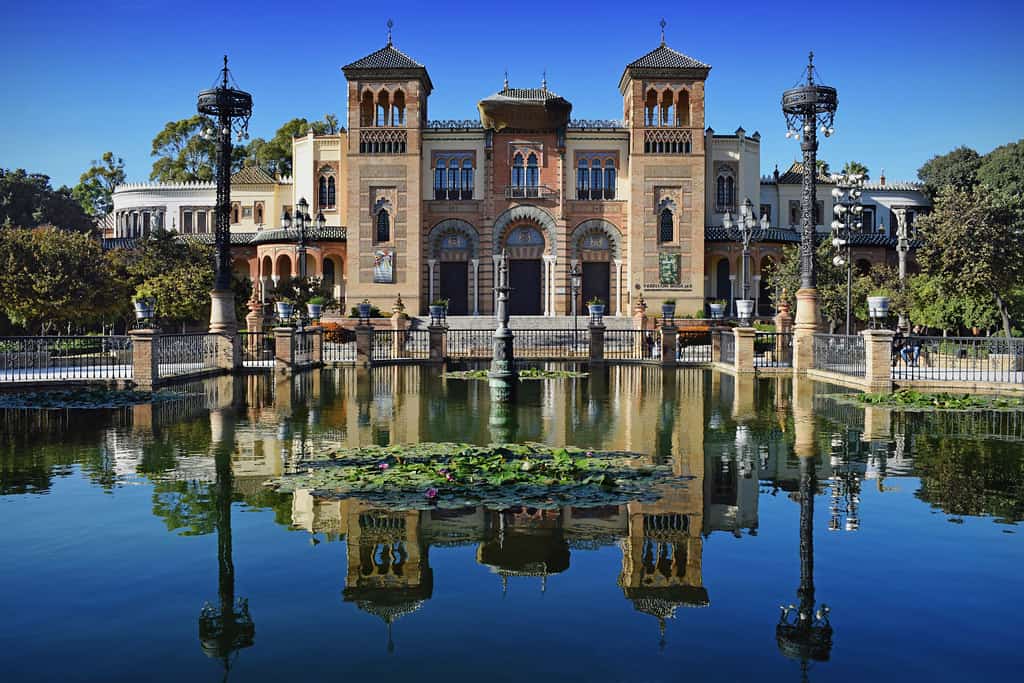
If you’re looking for a city with lots of green space, Seville is the place for you.
The city’s most famous park is Parque de Maria Luisa, which can be found just adjacent to Plaza de Espana.
Most of Seville’s central green space was part of the San Telmo Palace, built in the 1500s just across the street.
Infanta Luisa Fernanda bequeathed the grounds to the city in the late nineteenth century, and a rebuild in 1911 gave them their current shape.
The gardens constructed by Nicolas Forestier, a French landscape architect, can be explored on foot, by bicycle, or even in a horse-drawn carriage.
The park also contains a number of significant buildings and institutions.
Two parallel rows of large palm trees line the park’s avenues. In contrast, the rest of the park is a sprawling botanical garden with exotic plants worldwide.
You never know what you’ll find around every bend on Maria Luisa Park’s winding paths. Check out the lovely ponds, gazebos, and sculptures galore!
Address: P. de las Delicias, s/n, 41013 Sevilla, Spain
We do not travel to run away from life; instead, we travel so that life will not run away from us. The voyage of discovery starts here. Kick off your world travel by checking out our traveling the world guide. When traveling the world, a visit to the United States is an absolute must. There will always be something in America that could be a great fit for you and your family! Discover the best places to visit in each state in USA.
Metropol Parasol
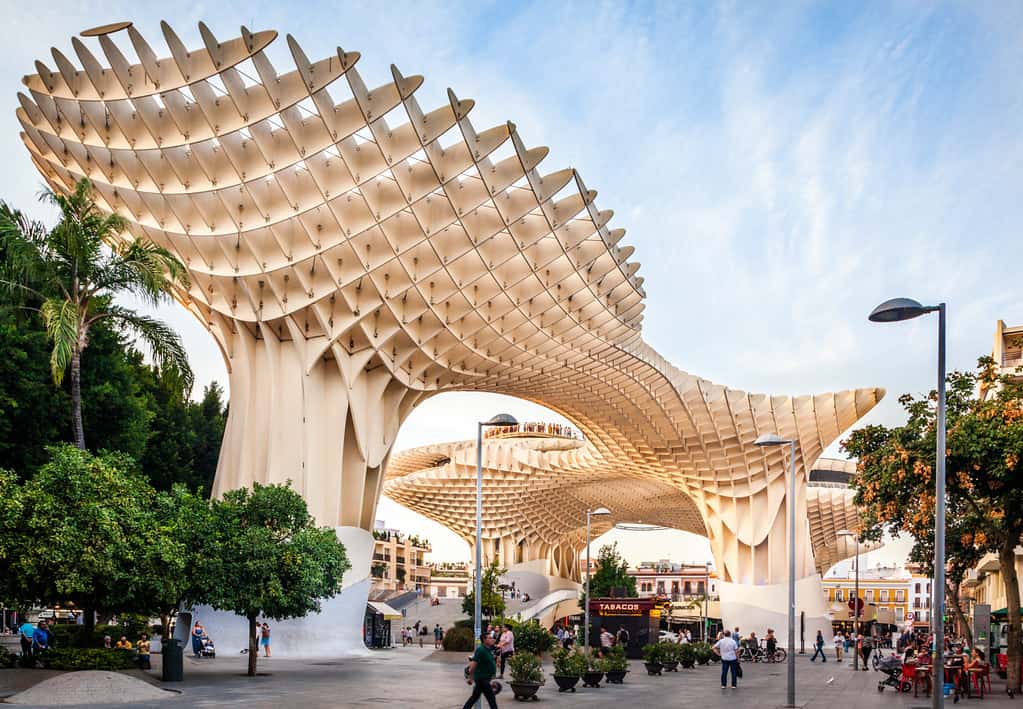
It is very hard to miss the Metropol Parasol in any part of the area surrounding Plaza de la Encarnación.
A 250-meter-long footbridge and a Mirador opened on May 6th, 2011, allowing visitors to Seville and the rest of the world to get a new perspective on the city’s history, culture, and ambiance from a unique vantage point.
It is also rumored to be the biggest wooden structure anywhere in the world.
This architectural marvel not only functions as a gathering place but also has a farmers’ market, eateries, an archeological museum, twisting rooftop pathways, and an open-air public space.
Due to the peculiar appearance of the lattice construction, the locals affectionately call it “las setas” or “the mushrooms.”
Visitors can pay a fee to gain entrance to the observation deck, which offers stunning vistas either during the day or in the evening.
Address: Pl. de la Encarnación, s/n, 41003 Sevilla, Spain
Museum of Arts and Traditions
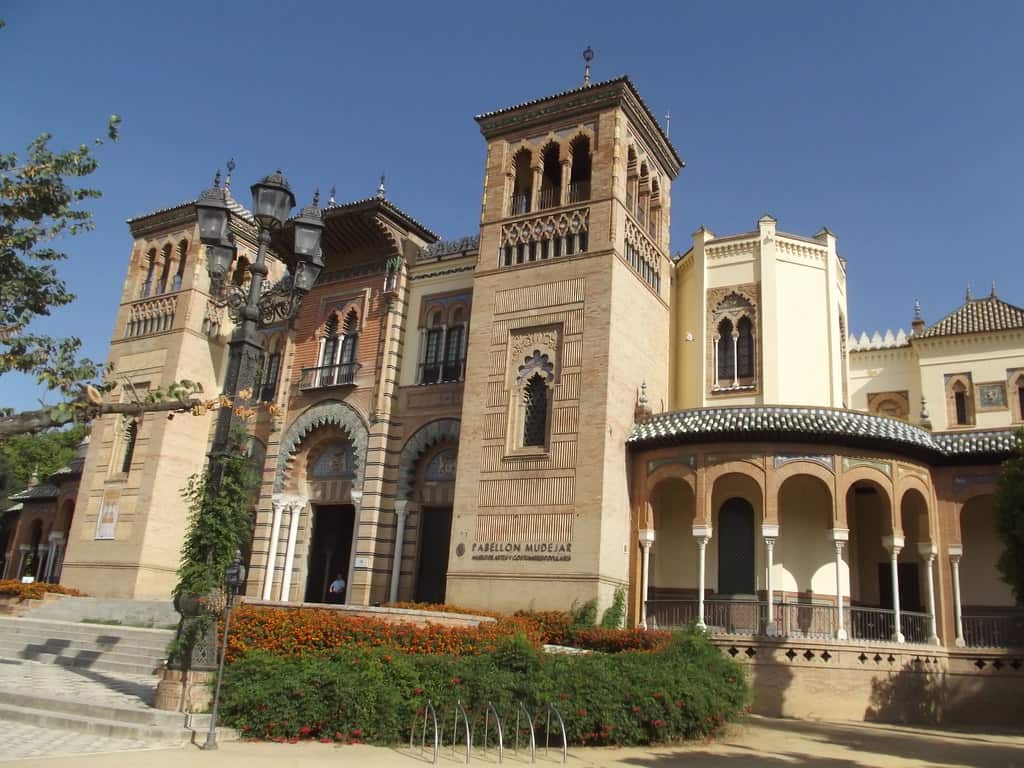
Europe’s best-known collection of Andalusian ceramics of all kinds
The Mudejar Pavilion, designed by Anibal González in 1914 for the 1929 Ibero-American Exhibition in Seville, is home to an exhibit.
An area of 5496 square meters is set aside for permanent displays and services. It is built of exposed brick, typical of the Mudejar style, and it features ceramic applications rich in designs and fantasy.
“Pavilion of Ancient Art” was the name given to it at the Ibero-American Exhibition. In 1972, a series of reforms were implemented.
As a museum, it has been operating since March 4th, 1973, when it first welcomed visitors.
One of Europe’s most comprehensive collections of Andalusian traditional ceramics, along with that of the Hamburg Museum, may be found here.
Also included in the Exposition is a fascinating museum devoted to the history of Seville’s traditional businesses, houses, and customs, which is surprisingly entertaining.
The old trades of Seville, like metallurgy, tile-making, lacework, and barrel-making for local sherry, are all shown in one section of the museum.
See ordinary objects from Seville’s long history here, like 16th-century ceramics and enormous displays of the city’s famous blade-forging tradition, such as swords and knives.
Address: Pl. América, 3, 41013 Sevilla, Spain
Museum of Fine Arts
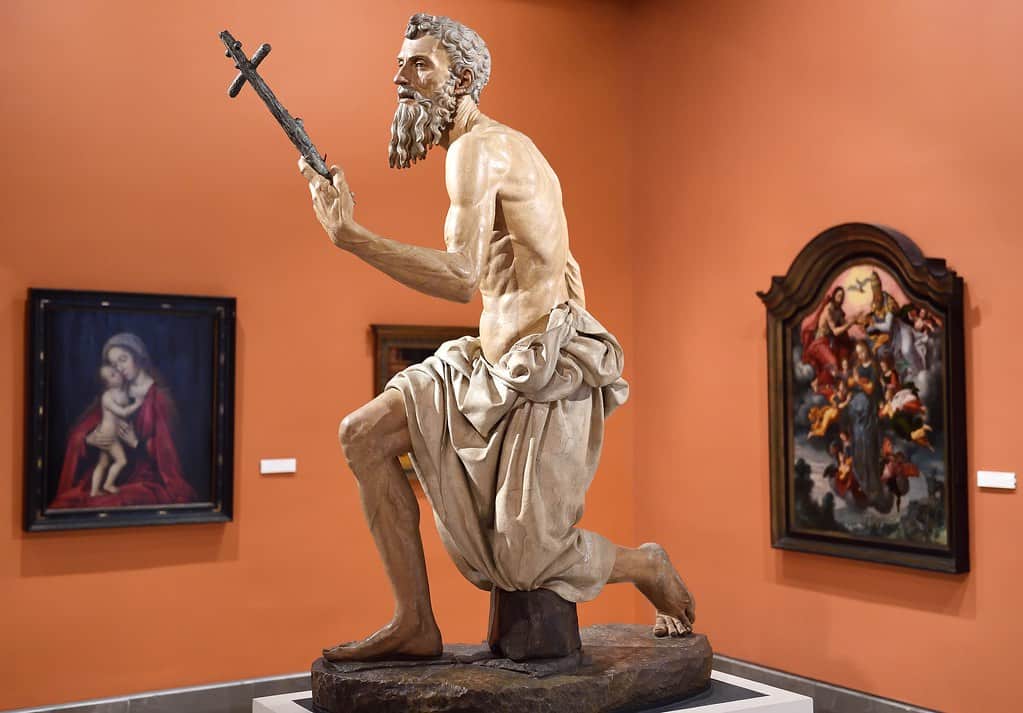
A must-see museum for everyone interested in learning about baroque painting in Seville.
The club’s first meeting was held in September of 1835, but it wasn’t legally recognized until 1841.
Seville was a wealthy city during the 17th and 18th centuries, which spawned a whole cultural movement.
A must-see for everyone interested in learning about Baroque paintings from Seville, especially the masters Murillo, Zurbarán, and Valdés Leal.
As part of the Contract of La Merced Calzada de la Asunción formed by San Pedro Nolasco under Fernando III, the convent that now houses the Museum was actually constructed.
Highlights of this collection were from the 17th century, when it was home to some of Spain’s most celebrated artists.
Baroque ornateness abounds in the city’s older neighborhoods, especially among the structures that do not appear to be Moorish in design.
Bartolomé Esteban Murillo is honored with a statue in the “Plaza del Museo,” where the museum is located.
The architecture is really wonderful, and contained within it is a collection of quiet courtyards that are wonderful sights that you shouldn’t pass up.
Address: Pl. del Museo, 9, 41001 Sevilla, Spain
Plaza de España
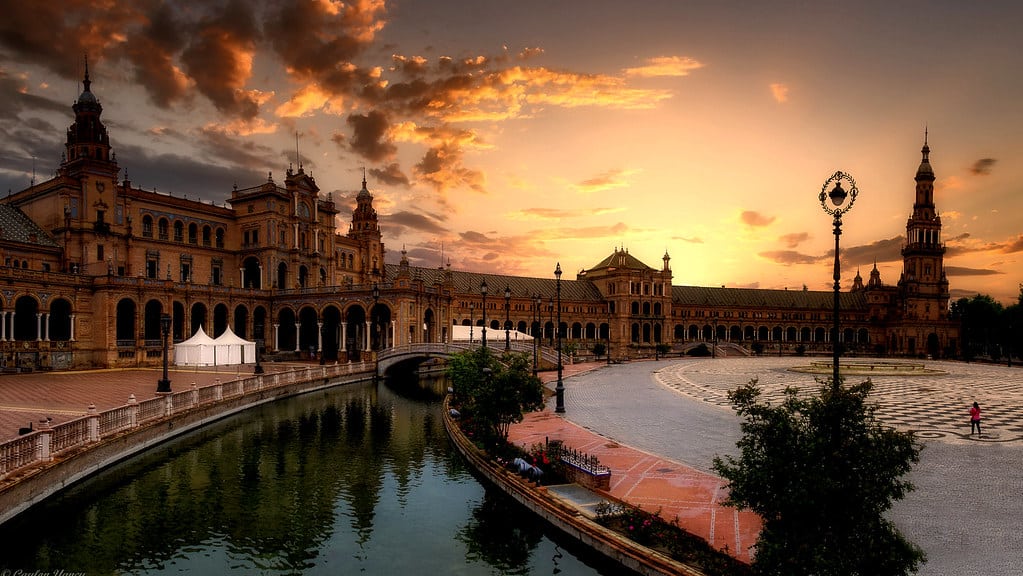
Have you heard that the city of Seville welcomes its guests with a hug?
There’s more than just a spiritual hug in the Plaza de Espaa, which has been awe-inspiring to visitors since 1929.
Light and grandeur fill the Plaza de Espana. Designed by Seville architect Anbal González for the 1929 Ibero-American Expo, this plaza is framed by the Mara Luisa Park.
As a result, a plaza-palace unlike any other in the world was created. It is a generous size.
With a total area of approximately 50,000 square meters, it is unquestionably one of the best-known plazas in Spain.
For a truly romantic experience, you can take a boat ride down the 515-meter-long canal surrounding the plaza.
Taking pictures in front of the area designated for their homeland has become something of a “ritual” for tourists from Spain.
Plan your visit to include time to view both the plaza and the nearby Parque Maria Luisa, which is right next door. The plaza is open to the public at any time.
Address: Av. Isabel la Católica, 41004 Sevilla, Spain
Plaza de Toros de la Real Maestranza
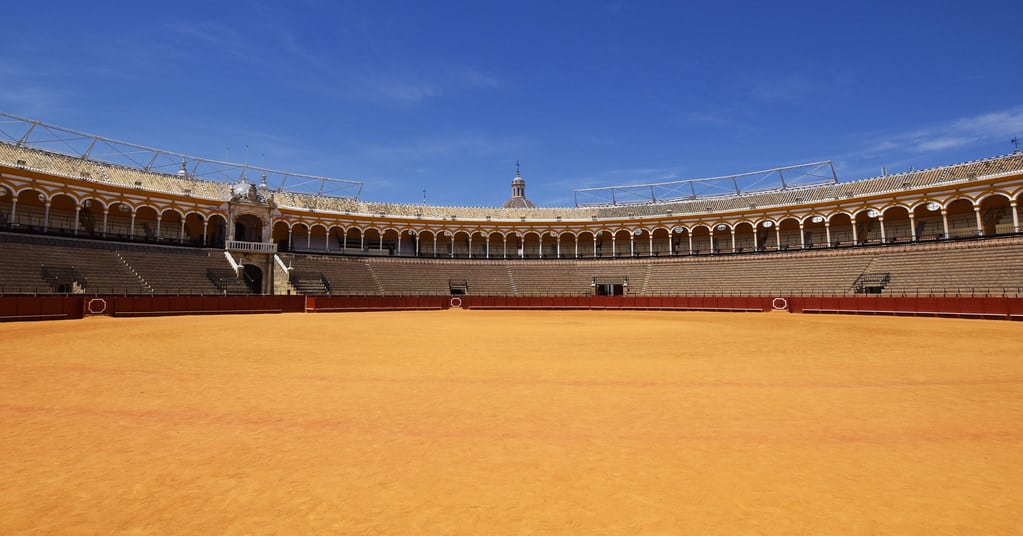
Spend your evening in Seville’s bullfighting ring, and you’ll be immersed in a centuries-old Spanish ritual.
Bullfighting has been widely criticized for its animal cruelty. Yet, many Sevillanos consider it an important part of their cultural heritage.
During a bullfight, there are three matadors, and each of them has two bulls that they try to weaken through a set of scripted moves.
In the final stage of the bullfight, known as the tercio de Muerte, each matador’s objective is to end the bull’s life.
When bullfights take place in the late afternoons of April through October, you can expect them to last roughly two hours on average.
On November 21st of that year, their Royal Highnesses, the Prince and Princess of Asturias, officially opened the new chambers containing paintings and bullfighting prints from the Real Maestranza de Caballeria de Sevilla’s Art Bullfighting Collections.
A visit to the on-site bullring museum is an excellent choice for those who want to get a sense of the ring’s grandeur without witnessing a fight.
Address: P. de Cristóbal Colón, 12, 41001 Sevilla, Spain
Ramón Sánchez-Pizjuán Stadium
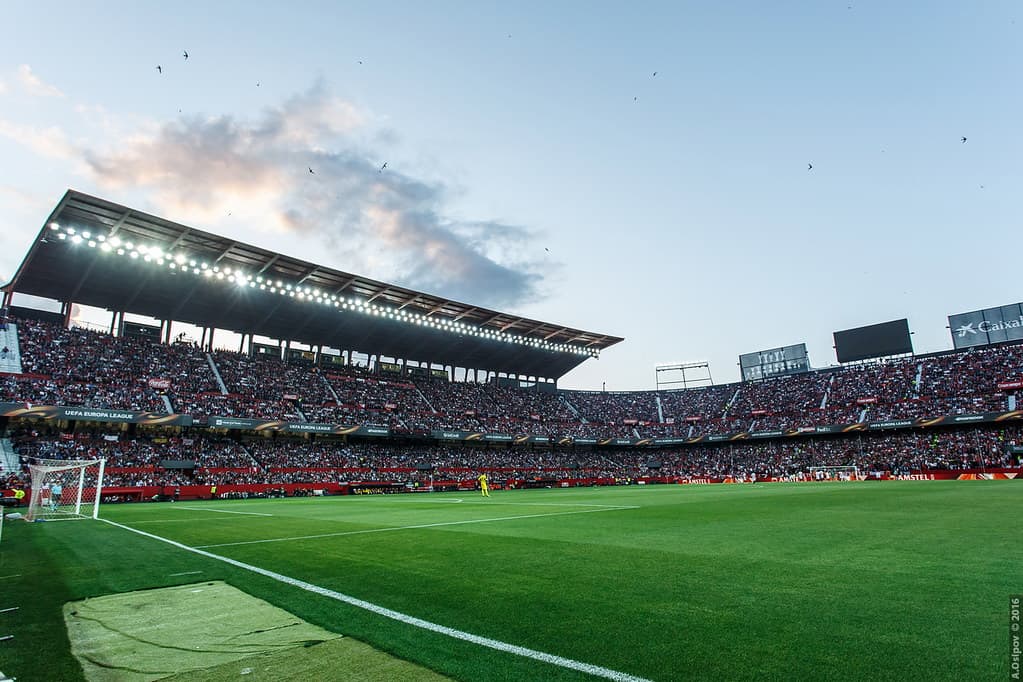
In the heart of Seville, the city’s most famous soccer club, you’ll find an exhilarating European football experience.
The Ramón Sánchez-Pizjuán stadium has hosted a few World Cup and European Cup tournaments since its completion in 1958.
The 45,500-capacity stadium is filled to the brim with excitement owing to the enthusiasm of Seville’s supporters.
The price of a ticket to a game can change depending on the day of the week, the opposing team, and the section in which you sit.
The stadium can be found in the heart of Seville, just a short distance on foot from both the city’s historic district and the principal train station.
It takes around 30 minutes to walk from the cathedral to Seville’s historic center, which is located west of the stadium.
A ten-minute walk from the main train station should get you to the stadium in time for the game.
It doesn’t matter if your travel plans don’t coincide with the football season, because you can still visit the stadium to learn about its history.
Address: C. Sevilla Fútbol Club, s/n, 41005 Sevilla, Spain
Real Alcázar
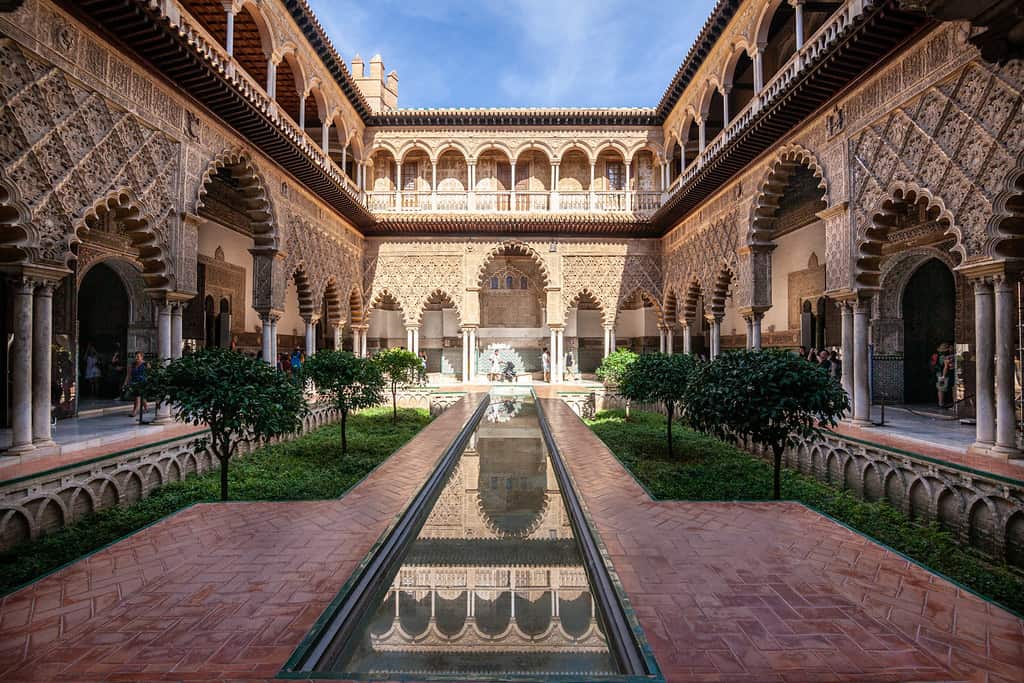
This place will let you live out your royal fantasies!
When you visit the palace and gardens of the Real Alcázar, you will have the opportunity to experience what it is like to rule over a country.
Since its construction in the seventh century, the palace has hosted members of Spain’s royal dynasty.
There are traces of a medieval foundation throughout, although the palace has been extensively affected by everything from Gothic to Baroque.
Andalusia’s mudéjar architecture is a unique blend of Muslim and Christian styles.
The upper level of this magnificent UNESCO-listed palace complex contains the royal family’s staterooms, halls, and chambers, which can be viewed for a small fee.
Recommendations from previous visitors include looking at everything, even the ceilings of this regal palace.
If you really can’t get enough of the royal style, the Casa de Pilatos in Barrio Santa Cruz is Seville’s other palace, although it’s much smaller than the Alcázar.
Address: Patio de Banderas, s/n, 41004 Sevilla, Spain
Semana Santa
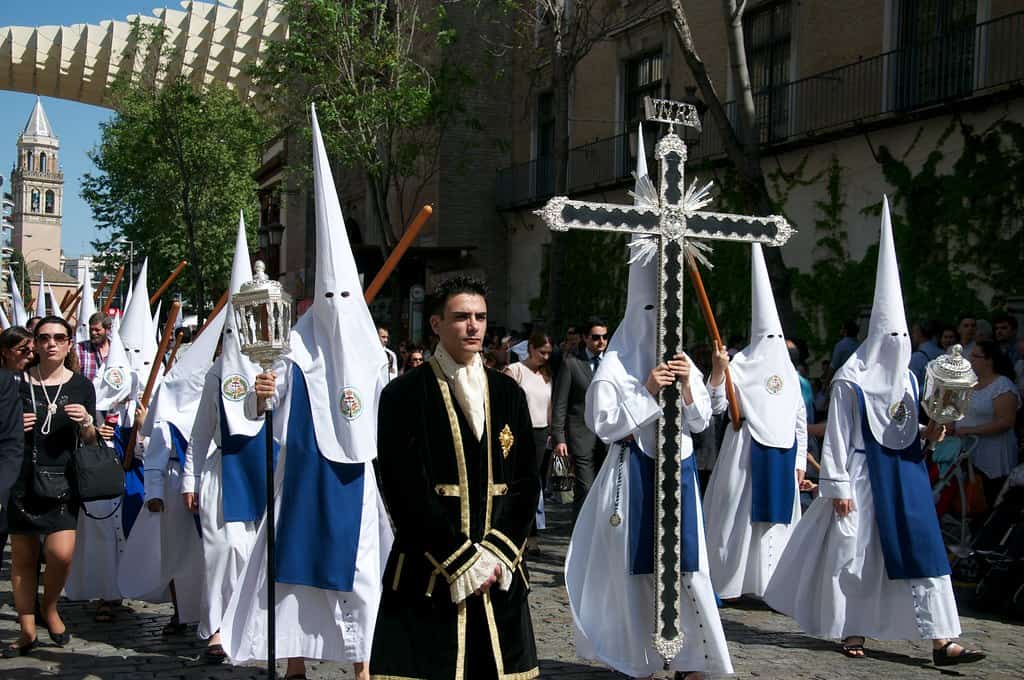
The streets of Seville are full of life during this event!
At this event, there is a mixture of spiritual and cultural feelings and a great appreciation for art.
From the Baroque period to the present, you’ll see the work of renowned sculptors at every turn.
There is a sense of permanence to what you see on the streets of Seville.
A procession of somber penitents will walk the streets from Palm Sunday until Easter Sunday, donning long robes, sandals, and those slightly terrifying pointy hoods.
All the brotherhoods linked to churches all across the city will be represented by these floats, which will depict emotional scenarios and mourning Virgins, as well as other religious themes.
To celebrate Maundy Thursday, cities across the country pitch grandstands and require female attendees to don black dresses.
Throughout the night, the procession marches through the city’s center.
When people hear about Semana Santa for the first time, a few of the things that catch their attention the most are the feeling that they have been transported through the centuries.
Address: Seville, Andalusia, Spain
Seville Cathedral
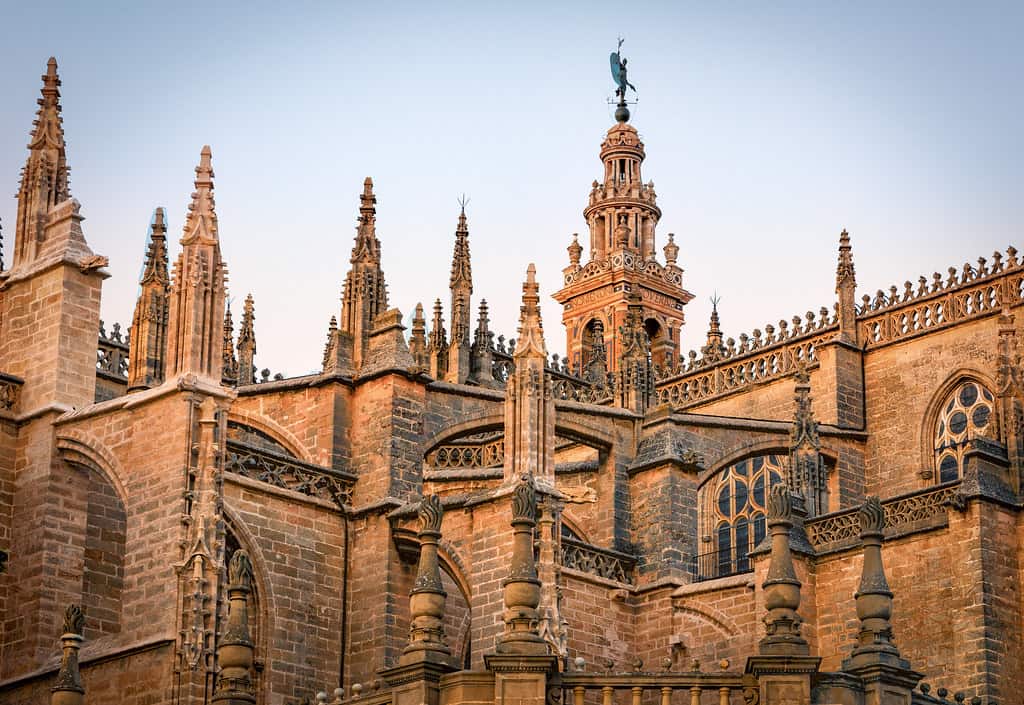
Admire the immense cathedral-like it’s a miniature of the world.
The Catedral de Sevilla is the largest Gothic cathedral in Europe. It is located in the middle of the city, where visitors worldwide are welcome to see its spectacular architecture.
You will waste a lot of time at this building, which is also known as the Cathedral of St. Mary of the See, simply gaping in awe at the magnificent architectural flourishes, relics, and historical curiosities.
The mosque that once stood where the cathedral now stands was demolished to make way for the cathedral’s construction, which was completed at the end of the 15th century.
After entering, several tourists reported being awestruck by the building’s huge interior spaces, which they found to be even more impressive given the size of the cathedral and its tower.
Even though this has never been proven, the general consensus is that the above-ground bronze tomb that is on exhibit inside the cathedral is the location where Christopher Columbus’ remains can be seen.
Don’t forget to stop by the beautiful cathedral that is just waiting for you to see because there is something wonderful around almost every corner.
Address: Av. de la Constitución, s/n, 41004 Sevilla, Spain
Tablaos and Flamenco Shows
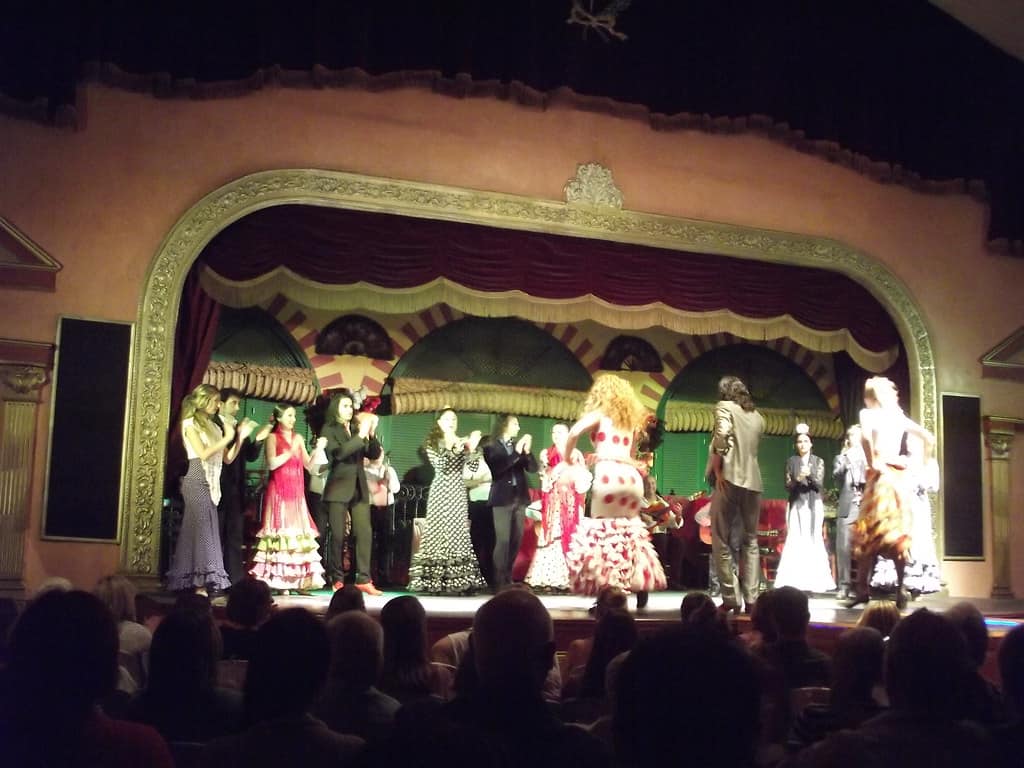
Get a sense of a culture’s essence through the genuineness and purpose of this unique exhibition of popular art.
Flamenco is unquestionably the most authentic embodiment of Andalusian folklore.
According to legend, the entrance of the gypsies into the Cadiz region of Jerez and Seville in the fourteenth century was the catalyst. Flamenco was popularized in the middle of the 19th century through bars.
It is possible to take in the magnificence of flamenco every day at Seville’s famous “tablaos,” the direct ancestors of the original flamenco bars, as well as in local clubs, and themed areas, and specific bars, and at events like the Biennial.
Go to El Palacio Andaluz if you’re looking for a high-quality show in a historic theater atmosphere.
Flamenco is performed twice a night by an extensive cast of dancers in this arena, and each performance lasts around an hour and a half.
Even though El Palacio Andaluz is located outside of the city center, former guests remark that the attentive service and interesting presentation make the trek worthwhile.
It doesn’t matter what time of year it is. You can always be certain there will be flamenco performances taking place somewhere in the city on any given evening.
Address: C. Matemáticos Rey Pastor y Castro, 4, 41092 Sevilla, Spain
Triana
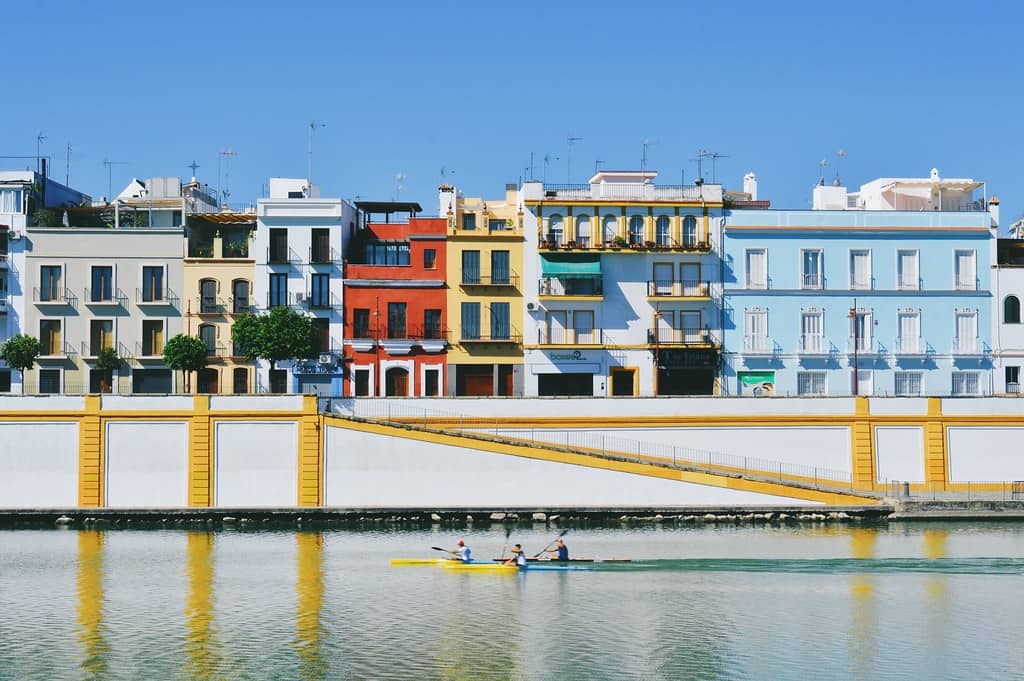
Give this neighborhood a visit and see how it shines through its unique charm.
When you first walk into Triana, you’ll note that it has a distinct personality all its own, owing to its origins on the opposite riverbank.
Many aspects of Seville may be traced back to Triana, even if the Guadalquivir river marks the city’s split from Triana.
Triana has always been a place where vocations, trades, and craftsmanship have thrived, and it’s not simply because of its ceramics sector.
Triana’s ceramic art and flamenco dance have a strong Sevillian influence, and it’s no accident that both are “art.”
The city of Triana is home to a slew of notable flamenco performers, bullfighters, potters, and sailors.
Everywhere you turn in Triana, you’ll find something new to discover, from the houses with their iconic neighbor patios to the bars and stores that are a part of the community.
Visiting Triana will surely inspire you, and it is a great way to experience a real neighborhood.
You haven’t made up your mind to go to Seville, Spain, yet, have you? Click here for all the reasons to visit Seville, Spain, at least once in your lifetime here.
Address: Seville, Spain

